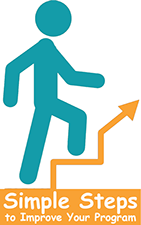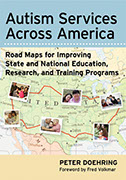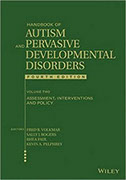Acute ASD Treatment Program
The Acute ASD Treatment Program was designed to be a model for UHS' 200+ network of behavioral health facilities across the USA. I led the development and launch of the Acute ASD Treatment Program. Within 7 weeks of my hire, I had assembled and trained a team, and we opened our doors to serve the first patients walking in. Three weeks after we opened, we withstood a comprehensive audit by state regulators.
During my tenure, the Acute ASD Treatment Program provided intensive, in-patient stabilization and treatment to up to 16 children and adolescents at a time. We served patients between 6 and 18 years of age who had an autism spectrum disorder or a related developmental disability, and who presented in severe behavioral crisis that posed an immediate and significant risk to the health and well-being of the patient or others. The program was one of the only in the country that accepted patients across the autism spectrum, and that operated a 24-hour walk-in clinic.
Related Content
On this site
Key elements
An integrated model of clinical treatment
I was responsible for developing the clinical and operational model for the Acute ASD Treatment Program: establishing treatment priorities and assessment standards, developing data collection systems; designing a staffing model with training standards, and authoring program descriptions needed by state regulators and insurers. The program relied on a Clinical Care Pathway designed to stabilize and then decrease the frequency and intensity of the target behavior(s) contributing to the need for hospitalization, and re-integrate most patients into the community within 3 weeks: intensive, positive, and proactive behavior support driven by functional behavioral assessment; medication management; re-evaluation of community-based supports; treatment of co-occurring conditions as needed, and; intensive parent training (Doehring, 2013a). The program relied on intensive levels of front line staffing, and a multidisciplinary team approach. Treatment involved rapid and intensive assessment, daily evaluation and multidisciplinary team review, and cross-agency team meetings for discharge planning.
Day to day clinical training and oversight
I provided full clinical and operational oversight for 16 months, helping to lead daily patient rounds, weekly treatment updates, and multi-agency case conferences. I assisted in providing supervision and guidance to all clinical staff as needed, and in collaboration with other leaders at Foundations. I was also responsible for developing and delivering specialized training to the in-patient treatment team. I designed and delivered an initial 12 hour training in the clinical model and specific interventions for all new staff assigned to the ASD program, and an abbreviated format for staff elsewhere in the hospital who may occasionally fill a vacant shift or have intermittent contact with patients or families.
A continuum of community-based support
I used the experience to propose a model for a regional and statewide continuum of support spanning school-based behavioral services, community-based wraparound, and residential and in-patient treatment services (Doehring, 2013b). This model also includes tiered systems of training and oversight similar to those used successfully in Delaware for behavior support, safety, and extended educational services (Doehring, 2011). I framed this model as a story of preventable behavioral crises (Doehring, 2014a) when I advised the Connecticut Autism Spectrum Disorder Advisory Council to consider pilot funding for a small in-patient treatment program (Doehring, 2014b)
 Design staffing models and professional development programs to ensure the desired treatment fidelity and treatment intensity
Design staffing models and professional development programs to ensure the desired treatment fidelity and treatment intensity
These are key factors in determining the impact for all EBPs (Doehring, 2013), and designing a program from the ground up would give me a chance to test ideas for both. Fidelity can be addressed with training and coaching; designing and delivering professional development can promote fidelity and create expertise. Treatment intensity can be addressed with staffing (Doehring, 2013). I carefully designed a staffing model and schedule that would balance the need for consistent support without relying on the 1:1 staffing characteristic of many in-patient programs for persons with ASD.
 Build programs that take advantage of powerful, evidence-based practices using positive behavior approaches informed by functional assessment
Build programs that take advantage of powerful, evidence-based practices using positive behavior approaches informed by functional assessment
The most powerful EBPs are those targeting problem behaviors using positive behavior approaches informed by functional assessment (Reichow, Doehring, Cicchetti, and Volkmar, 2011). A more systematic review subsequently revealed that there may be enough research to tie certain evidence-based practices (or EBPs) to specific behavioral functions to address severe behaviors (Doehring, Reichow, Palka, Philips, and Hagopian, 2014).
 For programs that depend on the involvement of multiple agencies, anticipate the resources needed to ensure coordinated care
For programs that depend on the involvement of multiple agencies, anticipate the resources needed to ensure coordinated care
I was also aware of the gaps in behavior support in the community: that lack of adequate basic behavioral support, the over-reliance on medication, the role that poor health or illness can play, and the lack of coordination between agencies. I projected that the majority of behavioral crises reflected one these factors alone or in combination, in which case they can be resolved relatively quickly. This proved to be the case, and allowed me to quickly build an effective program to fill a critical gap in services. I captured the interplay of these factors in a subsequent case study that also illustrated gaps and missed opportunities in research and policy (Doehring, 2014), and suggested ways of using these data to develop a statewide plan to better coordinate school, hospital, and community-based services and policies (Doehring, 2013)
 Ensure a sustainable pipeline of participants by carefully matching programs to the unmet needs identified among populations in the region
Ensure a sustainable pipeline of participants by carefully matching programs to the unmet needs identified among populations in the region
I have learned that matching the population with the program is essential to long-term sustainability of any program of services: if you select the wrong techniques, your program will not work and you will not get new referrals. An in-patient program is especially vulnerable, as you have to maintain a steady stream of referrals to support the high levels of staffing.
 Consider broadening eligibility requirements, because many practices and programs for ASD are equally effective for those with ID but not ASD
Consider broadening eligibility requirements, because many practices and programs for ASD are equally effective for those with ID but not ASD
As my tenure at DAP wore on and as I came to grip with the needs on my own daughter Margot, I came to appreciate that most practices and programs for children with ASD were just as effective for those with intellectual disabilities (or ID) without ASD. The In-Patient Treatment program was my first opportunity to put this into practice, as it was the first program I was able to design from the ground up. It was clear that most of these behavioral techniques worked equally well on people with intellectual disabilities regardless of whether they also had autism. I therefore designed the program to accept both populations, which effectively doubled the eligible population. Persons in the spectrum but without an intellectual disability were already being referred to the traditional in-patient treatment program, and so I also recommended that we continue to serve this population. While this required that we broaden out intervention approach, the variety of patients was very enriching.
 Consider the availability of non-professional staff, and the resources required to train them, when planning, sustaining, expanding, or replicating new services.
Consider the availability of non-professional staff, and the resources required to train them, when planning, sustaining, expanding, or replicating new services.
Almost all programs of services depend on non-professional staff, like aides or assistants, who may provide the bulk of direct support to students, patients, or clients. A core team of trained and committed assistants is a sign of a healthy program with a clear mission. In most regions of the country, there is a ready pool of eager but untrained people you can recruit for your team: students supplementing their income, parents returning to the workforce, recent immigrants, young people seeking their calling, and so on. And some of these will grow into professionals. A key ingredient to the launch and success of the In-Patient Treatment Program was the plan to recruit, train, and sustain this team of aides equivalent to up to 35 full-time position. Training was facilitated by a program model centered on intense application of a core set of evidence-based practices for addressing problem behaviors. Other steps were designed to retain aides by identifying and addressing concerns: seeking input from aids in designing treatment plans, specifically allocating times for breaks during shifts, designating aides who served as direct liaison with leadership for any concerns, providing direct coaching to new team members, scheduling open staff meetings, calling out aides and other staff each week for exceptional service, and allowing for ample de-briefing following behavioral crises. Acting immediately to suspend or terminate aides for inappropriate or irresponsible behaviors was also critical to the health of the team. I also anticipated that a subset of aides would be capable of greater responsibility, with the potential to continue their career as professionals. To engage this subset, we rotated selected aides through specially designated positions in which they acted as liaisons with leadership, provided mentoring to new aides, and took charge of organizing certain key activities.
X
My Presentations and Publications
 (2013). Autism Services Across America: Roadmaps for Improving State and National Education, Research, and Training Programs. Paul H. Brookes Publishing Co., Baltimore, MD
(2013). Autism Services Across America: Roadmaps for Improving State and National Education, Research, and Training Programs. Paul H. Brookes Publishing Co., Baltimore, MD
 (2014). Translating Research into Effective Social Policy. In Volkmar, F. Paul, R., Rogers, S., & Pelphrey, K. Handbook of Autism and Pervasive Developmental Disorders: Assessment, Interventions, Policy, the Future (4th ed.). John Wiley & Sons, Inc., Hoboken, New Jersey
(2014). Translating Research into Effective Social Policy. In Volkmar, F. Paul, R., Rogers, S., & Pelphrey, K. Handbook of Autism and Pervasive Developmental Disorders: Assessment, Interventions, Policy, the Future (4th ed.). John Wiley & Sons, Inc., Hoboken, New Jersey
 With Brian Reichow, Tamara Palka, Cara Philips, & Louis Hagopian. (2014). Behavioral Approaches to Managing Intense Aggression, Self-Injury, and Destruction in Children with Autism Spectrum and Related Developmental Disorders: A Descriptive Analysis. Child and Adolescent Psychiatric Clinics of North America, 23 (1) 25-40.
With Brian Reichow, Tamara Palka, Cara Philips, & Louis Hagopian. (2014). Behavioral Approaches to Managing Intense Aggression, Self-Injury, and Destruction in Children with Autism Spectrum and Related Developmental Disorders: A Descriptive Analysis. Child and Adolescent Psychiatric Clinics of North America, 23 (1) 25-40.
![]() (2013). From Compliance to Excellence: Creating Standards of Practice to Drive Program Development. Ohio Center for Autism and Low Incidence Conference, Columbus, OH.
(2013). From Compliance to Excellence: Creating Standards of Practice to Drive Program Development. Ohio Center for Autism and Low Incidence Conference, Columbus, OH.
 With Brian Reichow, Tamara Palka, Cara Philips, & Louis Hagopian. (2013). Behavioral treatment outcomes for significant self-injury in children and adolescents with Autism Spectrum Disorder and related intellectual disabilities. Workshop, American Academy of Child and Adolescent Psychiatry, Orlando, FL
With Brian Reichow, Tamara Palka, Cara Philips, & Louis Hagopian. (2013). Behavioral treatment outcomes for significant self-injury in children and adolescents with Autism Spectrum Disorder and related intellectual disabilities. Workshop, American Academy of Child and Adolescent Psychiatry, Orlando, FL
 (2013). Integrating Training, Research, and Policy in a Coordinated Network for Behavior Support for Children with ASD: Roadmaps for Program Leaders. Association of University Centers on Disabilities, Washington DC.
(2013). Integrating Training, Research, and Policy in a Coordinated Network for Behavior Support for Children with ASD: Roadmaps for Program Leaders. Association of University Centers on Disabilities, Washington DC.
 (2o14). Roadmaps for Leaders of ASD Programs: Integrating Training, Research, and Policy in a Coordinated Network for Behavior Support. Invited Workshop, Connecticut Autism Spectrum Disorder Advisory Council, Hartford, CT
(2o14). Roadmaps for Leaders of ASD Programs: Integrating Training, Research, and Policy in a Coordinated Network for Behavior Support. Invited Workshop, Connecticut Autism Spectrum Disorder Advisory Council, Hartford, CT